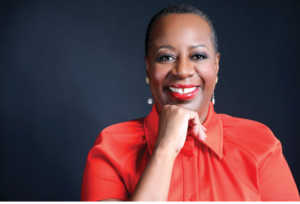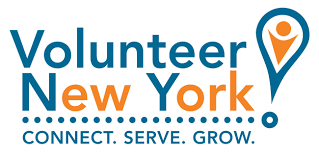October is National Disability Employment Awareness Month and Angela F. Williams is working overtime to spread the message of making job opportunities available for people with disabilities. In her work as president and chief executive with Easterseals, Williams is an indefatigable advocate for ensuring full societal inclusion and empowerment for the 1.5 million people that the organization serves annually.
 Easterseals, which is celebrating the centennial of its founding this year, operates a national network of 68 affiliates. Within the Westchester and Hudson Valley region, the organization offers programs focusing on cognitive, social and language development for students. In Connecticut, Easterseals has two chapters (one in Hartford serving the eastern half of the state and another in Waterbury serving the western half) that provide educational programs for students and health and employment programs for adults.
Easterseals, which is celebrating the centennial of its founding this year, operates a national network of 68 affiliates. Within the Westchester and Hudson Valley region, the organization offers programs focusing on cognitive, social and language development for students. In Connecticut, Easterseals has two chapters (one in Hartford serving the eastern half of the state and another in Waterbury serving the western half) that provide educational programs for students and health and employment programs for adults.
In this edition of Suite Talk, Business Journal Senior Enterprise Editor Phil Hall speaks with Williams regarding Easterseals’ goals for National Disability Employment Awareness Month.
This year is actually the 30th anniversary of the passage of the Americans with Disabilities Act (ADA). Thirty years since the ADA became law, what are the employment challenges that still persist for people with disabilities?
“Thirty years later, there are still chasms when it comes to employment of people with disabilities. If you look at the 2019 numbers around labor force participation, 77.3%, for people without disabilities were able to be employed, compared to 33.6% of people with disabilities. So, that’s a chasm ”“ it’s not even a gap. And then when you look at part-time labor, more people with disabilities tend to be at the part-time level. If they’re going to get hired, it’s going to be part-time as opposed to full-time. And when you look at the actual wages themselves, there’s a huge disparity.
There’s a lot of talk now about diversity, equity and inclusion. When companies talk about that, they’re still missing that disability piece. Some of them talk about it, but they don’t really focus on creating that on-ramp for people with disabilities to be hired.”
How has the pandemic impacted employment opportunities for people with disabilities?
“I would say it’s interesting because it put all of us on a level playing field, in that everyone had to figure out how to engage with each other in daily life by using technology to connect with the outside world without physically being able to get there. So, in some ways, I think it level-set access to everyday things ”“ whether it’s transportation, going to work, doctor’s visits, shopping ”“ and it showed us how important technology is and how you could actually work from home and still be productive.
This means that people with disabilities can work from home and be contributors to society. They want to be engaged, just like everybody else. We talk about barriers being brought down and I think Covid has done that.”
For many years, there was the belief that it is more expensive to bring a person with disabilities into the workforce and too cumbersome to accommodate them. Prior to the pandemic mooring everyone at home, did these myths still exist?
“I think they did. If businesses understood what it means to accommodate someone with disability in the workplace, they would be hiring more people with disabilities. A lot of people feel like it’s going to be costly to the company if I hire somebody with a disability, that I’m going to have to buy expensive equipment for the person and their productivity level may not be the same as a co-worker, and on and on and on.
However, I will say that’s absolutely not true. And I will just share, I have a communications person that works for me named Erin Hawley and she is disabled, but she works for me in from her home in Massachusetts. If you have a chance, to go on my LinkedIn page because I wrote an article about working with Erin and how she can use technology. And I talked about how she struggled as a person with a disability getting her degree in college and going to get her master’s in journalism. People underestimated someone in a wheelchair and said she can’t possibly manage schoolwork. I know that same bias followed its way into employment, and hers is not the only story like that.”
What can the private sector do to be more serious about hiring people with disabilities?
“Good question. I will say that Easterseals has put a lot of thought into this, especially going into this month. You’ll see some things coming up on our website soon about the Easterseals plan for disability equity. It’s a 10-point plan that we’re putting forth the companies can do, and I’ve already sent this plan out to several companies and said, ”˜Will you join us in launching this?”™
We recognize that it’s a continuum. For some companies, it may be tweaking their disability equity and inclusion plan to include an employee resource group that’s focused on disability. It could be something such as reviewing policies to make sure that they’re disability-friendly. It could be a commitment by a company to do an assessment of all of the jobs and the salaries to reduce the pay gap. So, there are a number of things in our 10-point plan that we are recommending that companies do to start addressing the disability employment chasm.”
What is it about the work that you do it Easterseals that invigorates you? And what was it that attracted you to join the organization?
“I’m the daughter of a civil rights leader, a pastor of a Black Baptist Church in Anderson, South Carolina. He was the executive director for the NAACP of South Carolina and used to go around investigating lynchings. I was born in the civil rights era to parents active in the civil rights movement, and that’s caused me to go to law school.
For me, it’s always been about caring for people that are left behind, the marginalized. I am also an ordained minister, and my husband and I have worked in the South Side of Chicago with kids that are left behind and are in the foster care system. That’s just a passion, and when it comes to people with disabilities it’s an opportunity to use my voice and my heart and my mind to really advocate for those that need that.”
A lot of nonprofits during this pandemic have been reporting difficulties in fundraising and maintaining their operational budget. How has Easterseals been holding up?
“Across the board, I would say that generally Easterseals has done fairly well. When it comes to donations, I’m just grateful to people that have continued to donate through the crisis. At the beginning of the year, there are there were a number of galas that were planned by our Easterseals affiliates, and they had to quickly pivot to online auctions and online galas, and people were very gracious to show up and still give. I’m thankful for that.
However, a lot of our revenue comes from providing services to people with disabilities ”“ autism treatments and therapies, daycare centers, childcare centers, seniors centers for seniors with Alzheimer”™s or dementia. When the states shut down businesses, it hurt our participants and it hurt us in terms of the reimbursement that we get for providing those services.”
What do you have in your agenda for 2021?
“I’m all about disruption and chaos. And I want to now press even harder to take advantage of this.
I hate the word ”˜new-normal.”™ I think this is a complete paradigm shift. What I see, for example, is the use of telehealth. Did you know a lot of states did not allow telehealth except for limited occasions? With the pandemic, the states now made exceptions. What I want to do is to advocate that every state makes this a normal part of the delivery of care as part of the healthcare system. That’s something I would really like to push on, because that then allows us to reach more people that may have transportation issues ”“ they may live in rural communities or on Indian reservations. So, this is an opportunity.
And that’s why I say chaos and disruption. This is an opportunity for us to rethink old ways of thinking, and to now move forward as a society to be more inclusive. I’m excited about 2021 to continue to push, push, push, push, and advocate for our participants.”



















